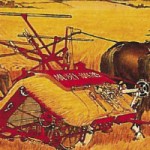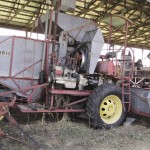
Farmers of yesteryear protected western wheat quality
Blending wheats of different grades was a scandalous crime that drew action from the PMO’s office

‘Binder Wars’ changed Prairie farming
Hand tying stooks effectively limited a single farmer to 25 acres and the invention of mechanical binders was a game changer for both producers and the farm equipment industry

Brandon was worth the trip — if you were looking for draft horses
Many of the leading horse dealers in the country made their home in Brandon and brought in stallions and mares from Europe, Ontario and the U.S.

The Massey 101 was one cool machine
Stylish and powerful, the redesigned tractor won the affections of farmers across the country

A game changer in grain farming
Australian engineer Tom Carroll was convinced that self-propelled combines were the way of the future
Multi-tasking tractor was also a truck. It could power your sawmill too
Boom times for farmers a century ago were good for equipment makers, too
It’s one thing about farming that hasn’t changed with time. It’s one thing about farming that hasn’t changed with time
Last year was a pretty good one for most Prairie grain farmers — but things were hopping a century ago, too. This 1912 photo of the American Able Company storage yard in Winnipeg is proof not only of good times, but that farmers of that age — like their modern counterparts — were quick to
